cultură şi spiritualitate
Gramophone
Wednesday, January 6, 2021
Complete with the original Gramophone reviews of 50 of the finest JS Bach recordings available, plus a playlist on Apple Music
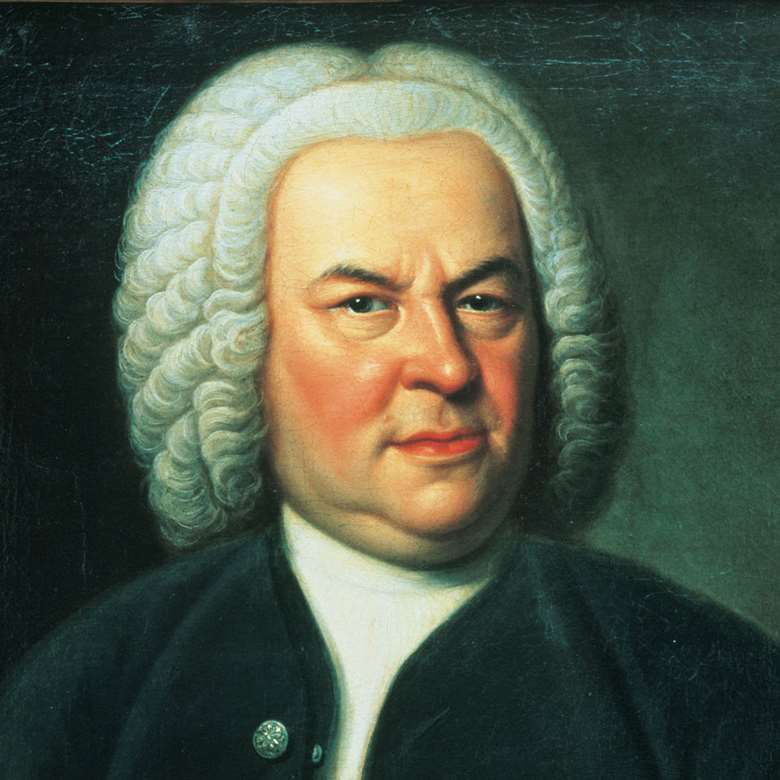
Following the overwhelming popularity of our lists of the 50 greatest Mozart recordings and 50 greatest Beethoven recordings, we are proud to present 50 of the finest recordings of JS Bach's music. Included here are Gramophone Award-winning albums, Recordings of the Month and Editor's Choice discs from the likes of Glenn Gould, Gustav Leonhardt, Sir John Eliot Gardiner, Angela Hewitt, Igor Levit, and many more.
The list is organised by genre, beginning with orchestral works, then moving though chamber, instrumental and vocal. We have also included, where possible, the complete original Gramophone reviews, which are drawn from Gramophone's Reviews Database of more than 40,000 reviews. To find out more about subscribing to this unique and endlessly fascinating resource, visit: gramophone.co.uk/subscribe.
Any list of great Bach recordings is, of course, going to be subjective, but we hope that this list will give a helpful guide to those embarking on their first excursions into Bach's music, as well as those looking to add to already expansive record collections. Enjoy!
Orchestral
Keyboard Concertos Nos 1, 2 & 4
ASMF / Murray Perahia pf
(Sony)
Soloist-conducted piano concertos can sometimes mean compromise, even chaos…but not in this case. Indeed, the playing of the Academy of St Martin in the Fields under Murray Perahia is even sprightlier than on a rival EMI recording of the same repertoire where Sir Neville Marriner conducts and Andrei Gavrilov plays the keyboard part. As soloist, Perahia is his usual stylish, discreet and pianistically refined self. He takes the D minor Concerto’s opening at a fair lick, a hot-foot sprinter embellishing the line with taste and affecting a little ritardando at 3'21 (just as the mood momentarily brightens) à la Edwin Fischer.
Elsewhere, he is very much his own man, intensifying his tone for rising sequences (at around 5'06) or softening it to the most rarefied murmur (as from 4'54 into the third movement). His command of colour is as striking here as it was on his recent CD of the Goldberg Variations (Sony Classical, 12/00), especially in the Adagio, which approaches cantorial heights of intensity. When it comes to the treacherous chordal cadenza at 6'11 into the finale, Perahia keeps up the momentum without either flagging or straining his tone.
As for the E major and A major Concertos, elegance is more of the essence than fire, but there too Perahia delivers. He has a way of accenting without jabbing the keys, tracing counterpoint while keeping the top line well to the fore. And how nice to hear the warming tone of a theorbo (bass lute) in the E major Concerto’s central Siciliano, a beautiful performance, more ornamental than cantorial, in keeping with the more decorative nature of the music. Tracks 6 and 7 (the E major’s finale and the A major’s opening Allegro) provide cheering examples of Perahia’s buoyant way with Bach’s faster music.
Rivals are plentiful, but credible contenders at this level of interpretation are rare. Andrei Gavrilov ‘out-Goulds’ Gould with his dry staccatissimo, and Gould himself was a good deal livelier in concert than on his rather sober commercial recording under Leonard Bernstein. Sviatoslav Richter plays with incredible control while keeping every note alive, but some might find his manner too austere. And while Edwin Fischer is consistently spontaneous, he is rather less elegant than Perahia – and his version of the A major Concerto sounds to me as if it’s ‘Busonified’ (or something very similar). Andras Schiff, like Perahia, commands a wide range of colours, though the binding force of Perahia’s concentration – always a boon in his latest recordings – leaves the stronger impression. The carefully balanced Sony recordings keep the sound frame tight and lively. All in all, this counts as yet another exceptional Bach-Perahia release. Rob Cowan (May 2001)
☆
Keyboard Concertos
Angela Hewitt pf Australian Chamber Orchestra / Richard Tognetti
(Hyperion)
These are not entirely modern-instrument performances. Angela Hewitt includes, as she says, ‘a harpsichord in its traditional role as continuo’. Combining old and new isn’t unusual because in the early years of period performing practices, the likes of Thurston Dart, Raymond Leppard and George Malcolm married a harpsichord to modern strings and wind. What’s unusual here is the melding of two different types of keyboard, one sharply transient, the other ductile; and just how their functions dovetail with one another may be heard in the slow movement of the Brandenburg Concerto No 5. Hewitt also adds a cello to the continuo while contributing notes inégales, appogiature and other embellishments to her own line. The result is a potent artistic synergy between the musicians.
Hewitt doesn’t slavishly follow a formula, though. In the Adagio of No 1 and the Adagio e piano sempre of No 3 (where she is most intense because both remind her of Passion music), she omits the keyboard’s bass notes for the exposition of the theme but only in No 1 does she play them for its return at the end. In these instances, in the Andante of No 7 and elsewhere, she also varies the prominence of her left hand to give the ripieno string bass a strong presence too, while delineating the right hand melody most feelingly.
Interpretative decisions are intelligently applied; and Hewitt is at her best in the slow movements, all of which are played with the finest sensibility. If a more sinewy approach to a few of the outer movements might not have come amiss, her ability to gauge the critical notes of phrases so as to maintain an elastically accented rhythm offers ample compensation; and the consummate Australian Chamber Orchestra is with her every step of the way. The flute is placed backward in BWV1044 but otherwise recorded balance and sound ensure unimpeded concentration on the performances. Small changes in level between some works are easily adjusted.
Albert Schweitzer denounced the seven keyboard concertos as arrangements ‘often made with quite incredible haste and carelessness’. They are nothing of the sort. Bach took a lot of care over their reworking; and Hewitt and Co do likewise over their re-creation. A superb pair of discs. Nalen Anthoni (September 2005)
☆
Violin Concertos
Isabelle Faust, Akademie für Alte Musik Berlin
(Harmonia Mundi)
That Isabelle Faust and the Akademie für Alte Musik Berlin have let this Bach violin concertos album run to nearly 2 hours of music suggests a relish of their task that is mirrored triumphantly in the resultant music-making. Their choice of repertoire, too, feels driven by a desire to celebrate Bach’s life with the violin rather than document it. If they had wanted to be pedantically completist about it, we would have the Fifth Brandenburg and the Triple Concerto; instead we get the three known violin concertos plus the three most convincing reconstructions from harpsichord concertos, supplemented by a reconstruction of the putative early violin version of the B minor Flute Suite, and all neatly interspersed with arrangements of two of the organ sonatas and a clutch of cantata sinfonias (including the rarely heard, trumpet-and-drum-laden BWV1045, a violin concerto movement of some flashiness).
Everything here is energy, though the exuberance is of the grounded kind that never gets out of hand. Tempos are brisk; but while there’s certainly not much risk of listeners thinking any of them too slow, neither does any one of them sound too fast, at least not the way they are performed here. Faust’s playing is technically brilliant, yet always at the service of the music, and everywhere enlivened by a richly varied repertoire of interpretative details, from spontaneous twiddle-ornaments to little tempo-tugs or deftly elongated notes within a phrase. From her 1658 Stainer she produces a sound that is period-instrument clean (even at times a little wiry), but can summon warmth of tone and tonal strength when she wants. And together she and this superb orchestra show exemplary contrapuntal clarity while also outlining the music’s architecture through glinting dynamic changes or compelling long-range crescendos and diminuendos. A word should go, too, to Xenia Löffler, whose liquid-gold oboe-playing is a perfect foil for Faust’s busy violin in BWV1060 and a perfect match for its aching beauty of the Sinfonia from Cantata No 21. In short, without being tempted to eccentricity, these performances reveal keen musical minds constantly at work.
The deeper delight of it all is that you can encounter subtle new aspects in the familiar works – the E major Concerto intimate, even a little withdrawn, the slow movement of the A minor given a lightly pulsing, march-like momentum – and real revelations in the lesser-known ones. I’m not sure I’ve ever heard the reconstructed concertos sound so convincing (especially the D minor), the trio sonatas go at a thrilling lick that surely no organ could keep up with and the sinfonias simply gleam. This is a hugely enjoyable celebration of Bach – himself a violinist – which conjures not so much the strict contrapuntal and formal genius as the joyous spirit of the living man. Lindsay Kemp (April 2019)
☆
Violin Concertos
Alina Ibragimova vn Arcangelo / Jonathan Cohen
(Hyperion)
In all likelihood, Bach composed 20 or more violin concertos, mainly at Weimar and Cöthen, and yet tantalisingly we are left with only two works for a single soloist – more often than not joined at the hip with the celebrated ‘Double’. The fashion these days is to return to Bach’s own transcriptions for keyboard as a repository for some speculative reworkings, and this approach inspires Alina Ibragimova’s varied, committed and poised readings of five solo concertos.
Defining the landscape is Jonathan Cohen’s elegant and spontaneously coloured palette summoned from Arcangelo, heard so startlingly in a fine Mass in B minor (11/14) and now redeployed to provide a sensuous ‘period’ accompaniment to Ibragimova’s style-aware modern playing. How far we have come in blurring the boundaries of previously polarised Baroque performing traditions.
If Ibragimova is occasionally caught between two stools in whether (or not) to follow her instincts, the best performances are brazenly alive, responsive and unselfconscious, underpinned by the soft-grained luxuriance of the lute continuo (note the assuaging sweet-and-sour hues of the slow movements of both the A minor and E major concertos, BWV1041 & 42) and a highly modulated use of dynamics.
The most problematic ‘transcription’ here is the A major (BWV1055), a work that has confounded scholars as to its true provenance, not least owing to its low register and figuration that seems almost deliberately unidiomatic. A somewhat hearty, even bullish, onslaught by Ibragimova rather misses the point in the opening movement – even if the clear springs of intrinsic radiance are, however, restored later in the work. If the strumming lute can seem a touch overbearing, the ‘Frenchified’ turns, manners and whims bring a delectable quality throughout.
The E major Concerto is triumphantly joyous, and we can also admire the thoughtful conceits of the G minor (BWV1056), despite a few awkward corners in intonation; the sublimely succinct slow movement reveals Ibragimova’s vibrato as an expressive tool of considerable discernment. Yet it’s the soloist’s unerring focus and resolute direction which see her flying through the D minor Concerto (BWV1052) with magnificent bravura. Her tendency to push the tempo contributes to the fireworks in the outer movements: an admirable riposte to the tyranny of the metronome! This is an outstanding and distinctive addition to a catalogue bursting at the seams. Jonathan Freeman-Attwood (November 2015)
☆
Brandenburg Concerto No 5. Concerto for Flute, Violin, Harpsichord. Italian Concerto
Jaime Martin fl Kenneth Sillitoe vn Jakob Lindberg theorbo ASMF / Murray Perahia
(Sony)
The spirit of Prades and Marlboro is here revisited, with Murray Perahia first among equals and the whole production infused with a sense of spontaneous musical interplay. To take just one telling example, go to 3'42" into the first movement of the Fifth Brandenburg Concerto, where Perahia cues a breathtaking diminuendo then boldly builds towards the recapitulated opening theme. The sense of engagement is infectious. Then there’s the cadenza, subtly reminiscent of Alfred Cortot in its bell-like voicing, elegance and, just prior to the orchestra’s return, cumulative excitement.
There are, in a sense, two Perahias at work here: the first a non-percussive front-man whose evenly deployed runs are a joy, unlike some who more approximate a hard stick being drawn past iron railings. And then there’s the keyboard poet within the orchestra, who even when playing mezzoforte or piano manages to project a full tone (witness his presence in the tutti afterBrandenburg No 5’s cadenza). The presence of a theorbo helps flavour the two concerto slow movements, the Triple Concerto especially where the impression of ‘leaning together’ is very pronounced. Superb solo playing, too, flautist Jaime Martin producing a memorably plangent tone.
As on previous Perahia Bach concerto recordings, the overriding impression is of intelligence, sensitivity and drama tempered by humility – Bach’s and Perahia’s. The Italian Concerto begs the by-now familiar question as to how one pair of hands can command so many simultaneous dynamic grades without sounding strained or self-conscious. The outer movements are colourful but never prettified, the principal melody of the central Andante like a memory of classic bel canto. And yet Perahia’s Bach has plenty going on: you attend to one layer of counterpoint, then return for another and so on, discovering something new each time. Even when judged in relation to other top-ranking piano recordings of Bach (among the most recent, Goode, Hewitt, Schiff and Anderszewski) this CD strikes me as exceptional. The recorded sound is full and forward. Rob Cowan (December 2003)
☆
Brandenburg Concertos Nos 1-6
Concerto Italiano / Rinaldo Alessandrini
(Naive)
How do you embark on a new addition to the vast pile of Brandenburg Concerto recordings? Do you go for a radical interpretation set to make people jump, laugh or recoil in surprise? Or do you perform them more or less as other good performers have but just try to do it better? Rinaldo Alessandrini and Concerto Italiano have gone for the latter approach and succeeded brilliantly. There is perhaps no Baroque group around today that can do the simple and obvious things to such exciting effect.
This is not to say that their Brandenburgs have no distinguishing features – just that, where they do, they spring from eminent good sense, as, for instance, in No 3 when the two central link chords come attached to a harpsichord flourish which has arisen directly from the first movement’s final chord; or the abrupt ending of No 2; or any number of places where an inner part is brought out with the help of a generously drawn legato so that you are left wondering why you never noticed it before.
Indeed, clarity of texture is one of this recording’s most glorious virtues, offering a view of the contrapuntal wonders of the music that has not always been available. This is particularly striking in the potentially murky, homogeneous textures of Nos 3 and 6; but the other, more colourfully scored concertos are just as lucidly done – a triumph of the balancer’s art, obviously, but surely just as much a result of clear-headed thinking on the part of the performers. Equally enlivening is a tight attention to articulative detail and tasteful ornamentation which keeps the music bouyant and forward-moving at all times.
Technically, things are not always perfect: the horn players struggle sometimes to keep up in No 1 and the solo trumpet part in No 2 is a bit harum-scarum. But the performances are so joyous and fresh that, in their straightforward but deeply musical way, they are the most invigorating newcomers to the Brandenburg fold since Musica Antiqua Köln’s provocative recording of the mid-1980s. Right now I can’t stop playing these discs.
Bonuses come in the form of the Sinfonia to Cantata 174 (a version of the first movement of Concerto No 3 to which lusty oboes and horns have been added) and a curious ‘patch take’ of the shorter, swirling first version of the harpsichord cadenza to No 5 (which I suppose you could edit in yourself if you happen to have the equipment). There is also a pleasingly unhyperbolic DVD of the sessions including interviews with Alessandrini. Lindsay Kemp (November 2005)
☆
Brandenburg Concertos Nos 1-6
European Brandenburg Ensemble / Trevor Pinnock
(Avie)
When Trevor Pinnock first recorded the Brandenburgs with the English Concert for DG Archiv in 1982, period performances of these works were relatively rare; today they abound, and it has become harder to make a mark in music that does not readily admit a wide range of interpretations. Not that Pinnock need worry about that at this point in his career. This new recording, made with an ensemble hand-picked for the job, is a 60th-birthday present to himself, and is just what such a project should be: talented musicians relishing each other’s company in music of truly inspiring greatness.
Unsurprisingly, it reflects the increased playing standards of 25 years of period-instrument growth. Only Pinnock himself remains from that first line-up, and while the players then were a high-class team (Simon Standage, Lisa Beznosiuk and Michael Laird among them), the players of the European Brandenburg Ensemble include some of the finest of today’s Baroque chamber players, and there is a relaxed expertise about their performances which seems to allow them to communicate directly and without technical or ideological hindrance. A hint of over-exuberant thickness in the texture of Concerto No 1 is perhaps a reflection of this, but elsewhere it is good to hear playing from the likes of violinist Kati Debretzeni, flautist Katy Bircher and the excellent David Blackadder on trumpet that is bold and confident without straying into coarseness. The clarity achieved in Nos 4, 5 and 6 also has a more natural air than the “studio-y” balance of the Archiv set, no doubt helped by the decision to use a violone at pitch rather than the more usual octave below. The pensive violin improvisation which links the two movements of No 3 is surely a miscalculation, feeling like more of a hold-up than it need be; more lastingly refreshing to my ears were the subtle relaxations of tension in the first movement of No 6, these days so often given the hard-drive treatment.
This is not a Brandenburg set that sets out to score points, and all that is needed from us is to sit back and enjoy its relaxed, celebratory spirit. Lindsay Kemp (March 2008)
☆
Brandenburg Concertos
Dunedin Consort / John Butt
(Linn)
Expertly stylish recordings of the six concertos Bach presented in neat copy to the Margrave of Brandenburg in March 1721 are two-a-penny but the Dunedin Consort offer more substantial style and bona fide expertise than most. John Butt’s essay is an accessible commentary, narrated with a friendly authority that bespeaks his extensive academic and performing experience. Several choices reveal sincere reflection about how Bach might have expected such concertos to be played during his years of service at Cöthen, such as the use of low ‘Cammerton’ pitch (A=392) and Werkmeister III temperament, and a decision to tune the viola da gamba and violone grosso to ‘Chorton’ (ie up a third) in order to better exploit the sonorities of open strings. None of those principles would be quite so valuable if the music-making wasn’t charismatic and refreshing. About half of the revolving team of 20 have participated in high-profile recordings before but the Dunedin players forge their own identity and capture what Butt praises as ‘carefree, joyous and spontaneous works’.
The pair of horns and three oboes in the opening of Concerto No 1 offer unforced conversational sparkle and the French-style fourth movement is an eloquent courtly dance (particularly the poignant trio for oboes and bassoon and compassionate strings in the Polacca). In Concerto No 2 the concertante quartet of David Blackadder (trumpet), Pamela Thorby (recorder), Alexandra Bellamy (oboe) and Cecilia Bernardini (violin) play with an airy fluidity, with graceful natural trumpet leaving room for recorder and oboe in the limelight. The nine-part strings in the dazzling finale of Concerto No 3 (which Butt takes at quite a lick) suggest the extravagant flair of Vivaldi’s L’estro armonico. The final Presto of Concerto No 4 is just one example of Bernardini’s articulate bowing and relaxed phrasing in rapid passages, and cellist Jonathan Manson and harpsichordist Butt provide continuo with characterful joie de vivre. Butt plays a modern replica of a large Mietke harpsichord like one purchased by the Cöthen court in 1719 and his flexible performance of Bach’s cadenza in Concerto No 5 has a rare extemporised atmosphere of exuberant fun; the amusement of the orchestra is almost tangible in the closing ritornello. In contrast, the lower strings convey sublime melancholy in the Adagio ma non tanto of Concerto No 6. Not withstanding the distinguished Brandenburg discography, this set is nothing short of sensational. David Vickers (Awards issue 2013)
☆
Orchestral Suites
Freiburg Baroque Orchestra / Petra Mullejans, Gottfried von der Goltz
(Harmonia Mundi)
Over the years, we’ve come to expect outstanding performances from the Freiburg Baroque Orchestra and this issue certainly does not disappoint. The four Orchestral Suites are supremely life-affirming music, fully realised here with playing that emphasises rhythmic vitality and poise, as well as giving inspiring expression to Bach’s wonderful melodic lines. There are some exceptional individual contributions: brilliant violin-playing in the Overture of the Third Suite, a beautifully matched trio of oboes and bassoon enlivening many moments in the First Suite and, in the Second Suite, Karl Kaiser’s immaculate flute-playing, with spectacular, stylish embellishments to the repeated sections.
The tempi are often quite brisk but never excessively fast and the orchestra’s internal balance is especially good; in the two D major Suites, the trumpets uninhibitedly promote a festive atmosphere but are sensitive enough to allow other instruments to take the lead when their parts are more important. You may not agree with the Freiburgers’ refusal to over-dot in the overtures but you’ll have to agree that, through persuasive phrasing, they perform these sections entirely convincingly. Indeed, conviction shows on every track of the set. This is music-making to lift the spirits. Duncan Druce (Awards issue 2012)
Chamber
Trio Sonatas
Brook Street Band
(Avie)
As Brook Street Band founder and cellist Tatty Theo says in her booklet-notes, the band’s reason for recording yet another arrangement of Bach’s six trio sonatas for organ has been for “the sheer pleasure of playing this wonderful music, and the wish to share it”. And it shows, with unaffected performances of remarkable freshness and vitality. Bach took the Italian trio sonata and “organ-ised” it, assigning the two melodic lines to one manual apiece and the bass to the pedal. Theo’s arrangements “reassign” the melodic lines to the violins and the bass to cello and harpsichord continuo; harpsichordist Carolyn Gibley is careful, too, not to obscure Bach’s writing with her right hand.
The BSB’s approach combines the clarity of London Baroque with the elegance of the Purcell Quartet while hinting at the colour of the Palladian Ensemble, which employs recorders and plucked strings as well as violin and gamba on its excellent disc of arrangements of Bach sonatas and chorales. But the exuberance is all BSB’s own. Theo’s bass is clear and firm throughout, providing a centre of gravity for violinists Rachel Harris and Farran Scott to really dance. This is as apparent in the fast major-key movements such as BWV529’s opening Allegro and dramatic minor-key movements such as the Vivace from BWV526 as it is in the slower, which, like the Largo of BWV526, tend towards the quicker side without sacrificing delicacy or gravitas. The variety of string articulation together with Gibley’s discrete harmonisations further serve both to enliven and to elucidate Bach’s musical arguments. Superb. William Yeoman (January 2011)
☆
Flute Sonatas
Ashley Solomon fl Terence Charlston hpd
(Channel Classics)
This is an impressive and enjoyable CD that easily bears repeated listening – certainly I’ve played it many times already, and not just for reviewing purposes. There is a soothing quality to the baroque flute, and its gentle, slightly reedy tone is captured very well on this disc from Channel Classics. It is closely recorded in a church acoustic to give a brilliant tone with added depth. Today’s makers of the baroque flute are producing highly refined instruments, exemplified here by the Rod Cameron copy of a Denner, which has a strong, even tone and good balance of register, allowing highly accomplished performers like Ashley Solomon complete technical freedom.
This recording is not merely music therapy, however, but a genuine musical experience. His performance of the unaccompanied A minor Partita, for example, is nothing short of commanding: the control in articulation and breathing allows the phrasing to be flexible and unfussy. Indeed, it is the directness of his interpretations that is so telling; there is almost none of that slightly coy rubato that some other flautists use to disguise the need to breathe. Rather, Solomon ensures that the phrases are neither choppy nor fragmented. He has an excellent sense of the longer line and the harmonic pull beneath Bach’s wonderfully melodic writing. The faster movements are perhaps the most successful, full of buoyancy and energy without seeming rushed or pushed. Try the second movement of the E minor Sonata, for example, or that of the C major. Slow movements are far from inexpressive, but again refreshingly direct: he never wallows (a good example is the introductory movement of the E major Sonata). Solomon is well partnered by Terence Charlston on a rich-toned Ruckers-copy harpsichord. Even if you already have a version of Bach’s flute works on CD, I can strongly recommend this version, which makes an equally good first-time buy. Prepare to be uplifted. Tess Knighton (May 2001)
Instrumental
Lute works
Sean Shibe gtr
(Delphian)
Can you ever speak in elevated, grandiose terms about a classical guitarist? You want to avoid weight, to find instead phrases of lightness and simplicity. Yet after listening to Sean Shibe’s magnificent new Bach recital, when I reach for comparisons I don’t go to other guitarists. Or even lutenists. I go to a musician like the violinist Rachel Podger, or the pianist Angela Hewitt. Because, as with Shibe, and to paraphrase Schweitzer, their Bach so clearly sounds like it must be a summation of everything that has gone before. Except of course we’re talking about their own musical knowledge and experience. Not the music of those hapless composers unlucky enough to exist solely to make a Bach possible. So, ideally, you ought to listen first to Shibe’s previous two recordings to get the most out of this one.
On the Bream-ful ‘Dreams and Fancies’ (9/17), he miraculously unifies the disparate humours of Dowland, Britten, Walton and Arnold. On ‘softLOUD’ (A/18), he invites us to an electroacoustic house party for strange bedfellows Anon, James MacMillan, Steve Reich, Julia Wolfe and David Lang. On the present recording, Shibe applies the musical and interpretative qualities that characterise its predecessors – energy, reflection, eclecticism, integration and emotional candour – to remind us that Bach might have been singular but he contained multitudes. Including those not yet born.
The flow of the E minor Suite’s Prelude is subtly arrested by expressively arpeggiated chords which throw into sharp relief a cut-glass Fugue that attunes the listener to rippling yet clearly defined semiquavers and tastefully applied ornamentation in the following dance movements. I like, too, the pointing up of the similarities between the BWV997 Partita’s Fugue and the previous Suite’s Gigue, while the intelligent use of sweetness of tone and rubato, as in the exquisite Sarabande’s third bar, is very fine. And has the Prelude, Fugue and Allegro ever sounded so contemporary in its nostalgic sweetness and, in the final movement, sheer unabashed joy?
Somewhat perversely, I’m reminded of that formidable doyenne of the harpsichord Wanda Landowska saying to cellist Pablo Casals: ‘You play Bach your way and I’ll play Bach his way.’ In reality, like Shibe, they both played Bach both ways. And with conviction. And love. William Yeoman (June 2020)
☆
Complete Sonatas for Violin and Obbligato Harpsichord
Rachel Podger vn Jonathan Manson va da gamba Trevor Pinnock hpd
(Channel Classics)
Another recording of Bach’s violin sonatas, and at last one that really hits the spot. Rachel Podger has already attracted much praise for her recordings of the solo violin music, but is heard here to even better advantage in the Six Sonatas for Violin and Obbligato Harpsichord, BWV1014-19, for which she is joined by Trevor Pinnock (of whose English Concert she is now the leader). The two make a fine match. Both are uncomplicated, utterly instinctive musicians with a sure technical command and sound stylistic sense, and in works as robust and complete as these, that is most of the battle already won. But this is also music of great poetry, and, without straining unduly to make their points, Podger and Pinnock bring this out superbly; Pinnock’s harpsichord is gently resonant and softly voiced, and Podger coaxes a lyrical flexibility out of her violin, its singing qualities enhanced thanks to a restrained but tellingly sweetening use of vibrato – one which also enables her to play more consistently and blessedly in tune than almost any other baroque fiddler currently in business.
It is difficult to single out details of this recording for comment; there just seems to be such a tremendous feeling of overall ‘rightness’ to it. Maybe the finale of Sonata No 2 seems rather frantic and the wonderful Adagio ma non tanto of No 3 a touch lumpy, but there really is not much else to criticise. And there are true gems to be enjoyed in the opening movement of BWV1014, where the violin makes an almost imperceptible initial entry, or the warm embrace of BWV1017’s Adagio, or practically any of the sparkling fast movements, played with invigorating rhythmic drive and clarity, into which Podger’s elegant but firmly controlled, willowy bowing tosses myriad subtle impulses and articulations.
This recording’s most recent period rival, that of Andrew Manze and Richard Egarr, shows a typical wealth of new ideas and inspired moves but is less satisfying as a whole, and suffers from some intonationally hairy moments and a less precisely pointed sound. Both recordings include the two Sonatas for Violin and Continuo, BWV1021 and 1023 (for which Podger and Pinnock are joined by a discreet and sympathetic Jonathan Manson on viola da gamba), but Manze and Egarr’s inclusion of the dubious BWV1024 is not echoed here; instead we get two of the three versions of BWV1019 whole, with the glorious extra movement required to make up the remaining version added at the end. The only period recording to touch Podger and Pinnock for technical assurance is that of Fabio Biondi and Rinaldo Alessandrini, but in both sound and interpretation it is heavy-handed compared with the spontaneous musicianship and airy texture on display here, and rather meanly it gives the six obbligato sonatas only.
In truth, all the recent recordings of these sonatas have had their merits. But this natural beauty – two discs for the price of one – is, quite simply, the best yet. Lindsay Kemp (February 2001)
☆
Cello Suites
Pablo Casals vc
(Warner Classics)
Young music-lovers today may find it difficult to believe that, 50 years ago, major works by Bach were considered to be of such specialized appeal that recordings could be obtained only in a limited ''Society'' edition. The cello suites had never been recorded until Fred Gaisberg, after protracted efforts, finally persuaded Casals to play them for HMV: Nos 2 and 3 in London in November 1936, the rest in Paris in July 1938 and July 1939. Casals had hesitated for 35 years before committing to disc these works – long regarded as unplayable, and never performed in their entirety – which he had discovered at the age of 13 and worked on for 12 years before playing them to an astonished public. To do so he had had to evolve new techniques and, intellectually, to delve deeply into the character and inner structure of the music. He stressed the dance basis of the movements; and his vitality, rhythmic flexibility (to clarify the shape of phrases) and tonal nuance, and the vigour and variety of his bowing, still leap from the discs to impress the listener.
From the profound contemplative quality of the G major Sarabande or the C minor Allemande to the zest of the C major Bourree, the breadth and grandeur of the D minor Suite's Prelude and the gravity of its Sarabande, the lightness of the E flat Allemande and Bourrees or the C minor Gavotte, the raptness of the C minor Sarabande, and the lucidity of thought behind the elaborate D major Allemande, these performances remain the classic yardstick by which all later ones must be judged.The digitally remastered transfers from the original 78s, yielding an astonishingly clean ambience to the cello, represent another technical triumph for Keith Hardwick; but listeners with acute ears will notice that the Courante of the E flat Suite and the Gavotte of the C minor were recorded at a slightly sharper pitch than the movements preceding them. Lionel Salter (March 1989)
☆
Cello Suites
Pierre Fournier vc
(DG)
Of all the great cellists I have heard playing Bach's six Cello Suites, BWV1007-12, either in the concert hall or in recordings of various kinds, Pierre Fournier came closer to the heart of the music, as I understand it, than almost any other. He made these recordings for Archiv between 1961 and 1963 since when they have seldom been out of the catalogue. Readers who prefer the charisma and extrovert flourishes of Tortelier (EMI), the penetrating though sometimes unstylish gestures of Casals (EMI References), or the brilliant but too often superficial readings of Schiff (EMI) and Maisky (DG) may be hard to win over to these concentrated, personally unassuming interpretations by Fournier.
Fournier seems to me to have possessed all the virtues of his fellow cellists without yielding to any of their self-indulgences; irrelevant personal idiosyncrasies are never allowed to intrude these finely sustained performances. He could be brilliant in execution – his technique was second to none, as he proves throughout this set – profound in utterance, aristocratic in poise and wonderfully coherent in his understanding of Bach's articulation and phrases. We need look no further than the Prelude of the First Suite in G major to find the supreme artistry which characterizes each and every moment of these performances. To be sure, there are very occasionally notes which fail to reach their centre but they are few and far between and certainly Fournier's intonation compares favourably with that of some of his virtuoso companions. Fournier's rubato is held tightly in rein and when he does apply it it is in the interests of enlivening aspects of Bach's formal writing. Thus it is in the Preludes, where the music requires rhythmic freedom if it is not to be relegated to the ranks of mere study material, that Fournier demonstrates his intuition and fine sense of style most forcefully; the Preludes to the First and Third Suites provide good examples. Fournier can sparkle too, as he does in many of the faster dance-orientated movements such as courantes, gavottes, bourrees and so on; in the sarabandes, on the other hand, he invariably strikes a note of grandeur coupled with a concentration amounting at times – as in the sarabandes of Suites Nos. 2 and 3 – almost to abstraction.
Above all, Fournier's Bach playing is crowned with an eloquence, a lyricism and a grasp both of the formal and stylistic content of the music which will not easily be matched. Curiously, perhaps, it is the baroque cellist, Anner Bylsma on RCA who often provides close parallels with Fournier. Bylsma's tempos tend to be faster than those of Fournier – that, after all has been a trend in baroque music over the past 20 years or so – but his conception of the music shares ground with that of Fournier. All things considered, it is hardly surprising that these readings seem as fresh and as valid today as they did 25 or more years ago. Out and out purists, poor devils, may not be able to adjust to modern pitch, modern instrument and, in the case of Suites Nos 5 and 6, the wrong instrument, but if that is so they are deserving more of compassion than censure. Fine recorded sound and strongly commended on virtually all counts. Nicholas Anderson (March 1989)
Adaugă un comentariu
© 2024 Created by altmarius.
Oferit de
![]()
Embleme | Raportare eroare | Termeni de utilizare a serviciilor
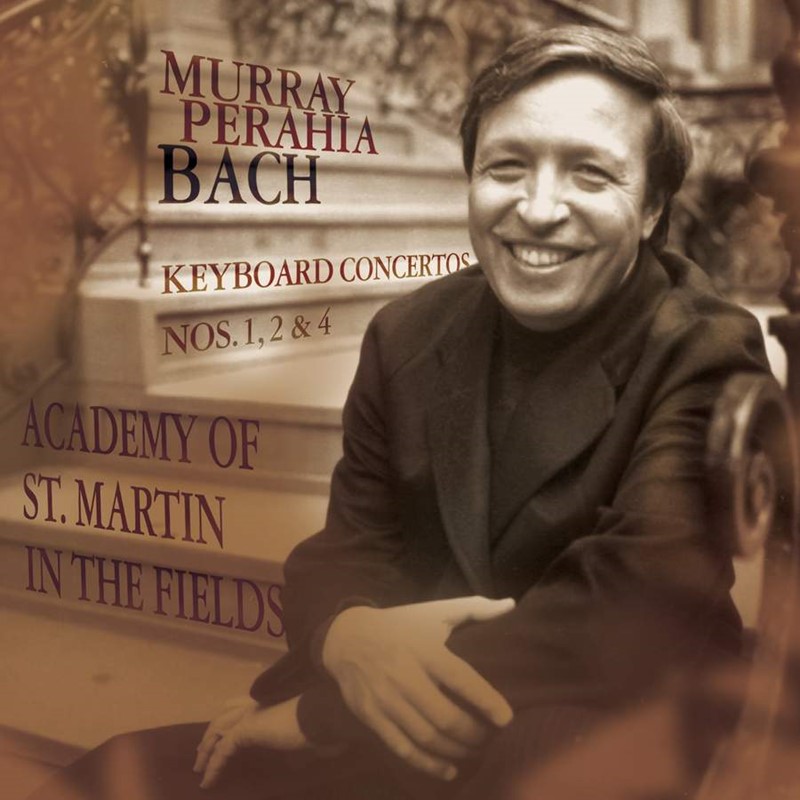
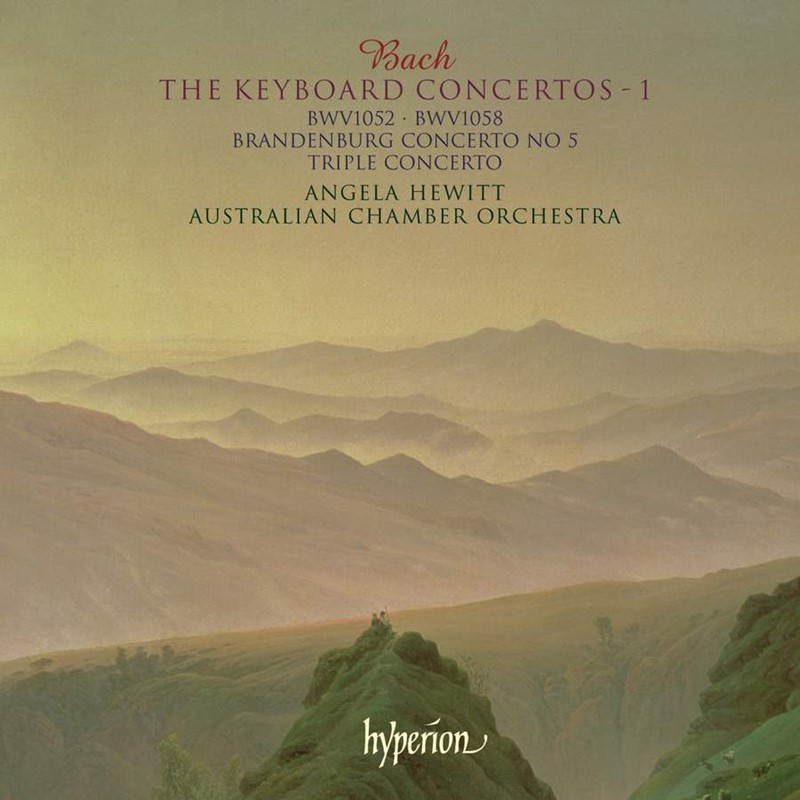
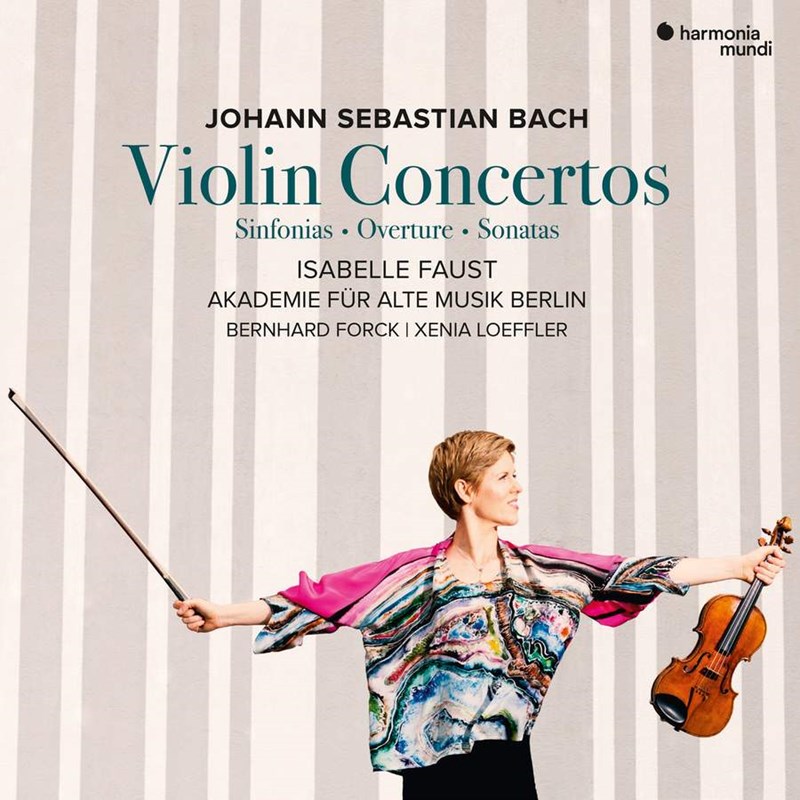
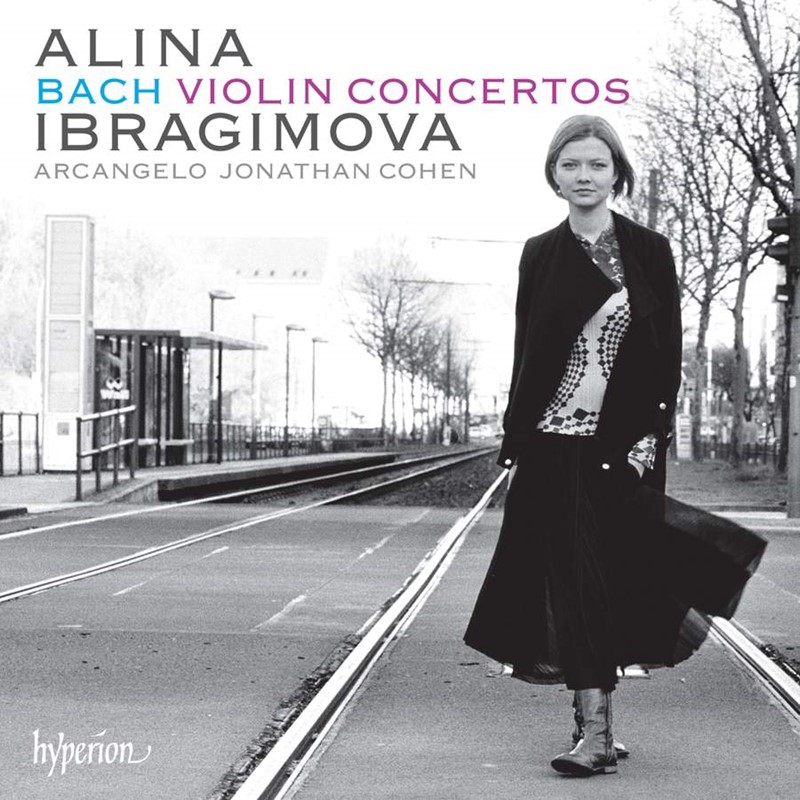
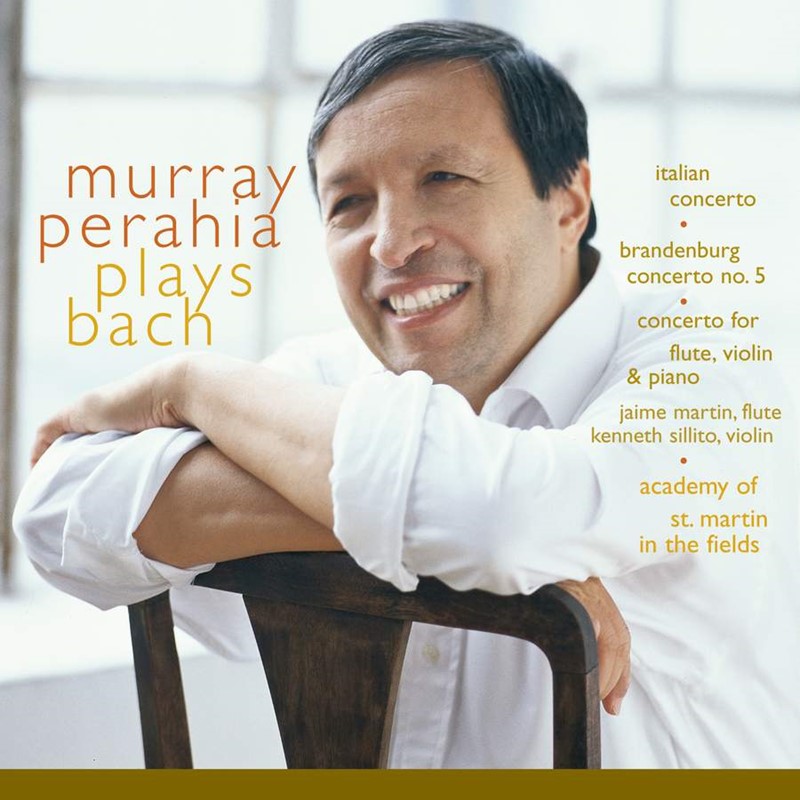
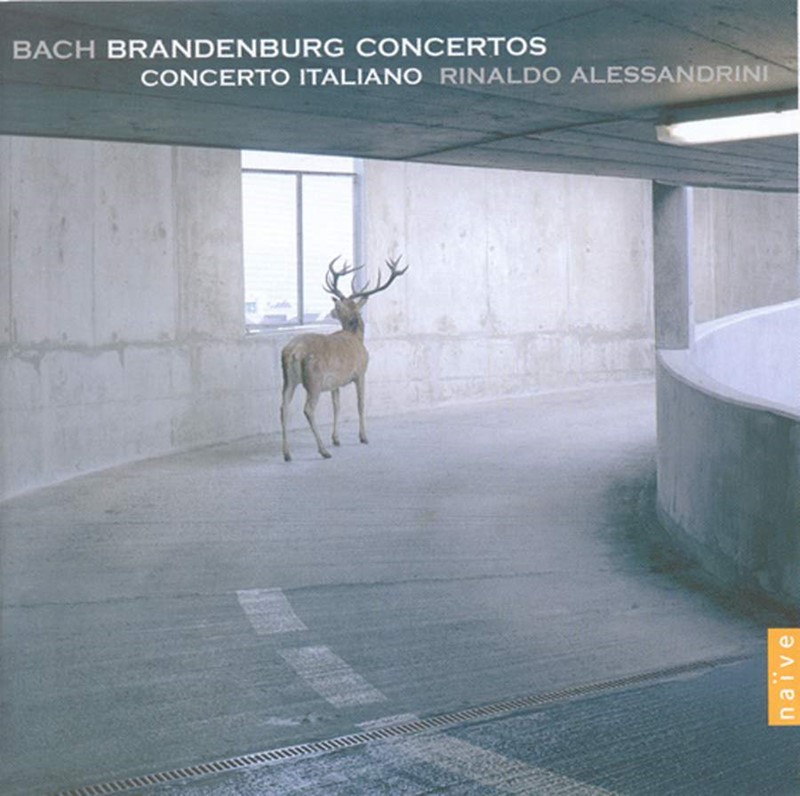
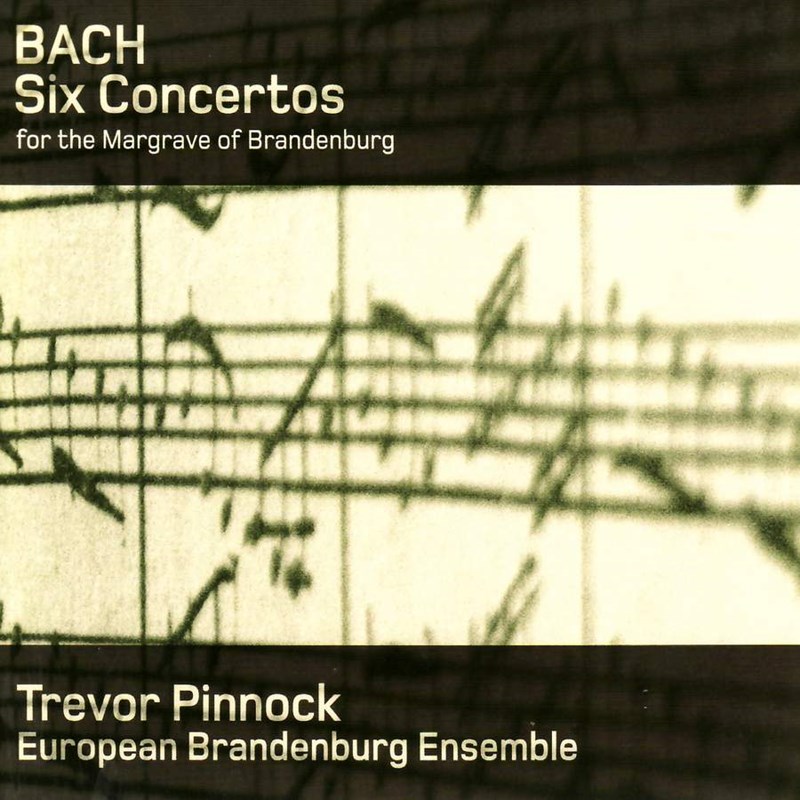
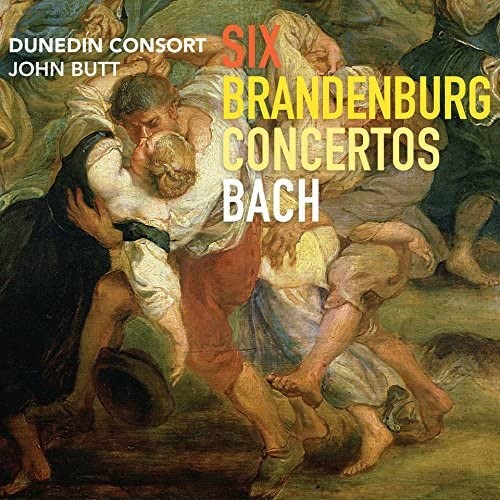
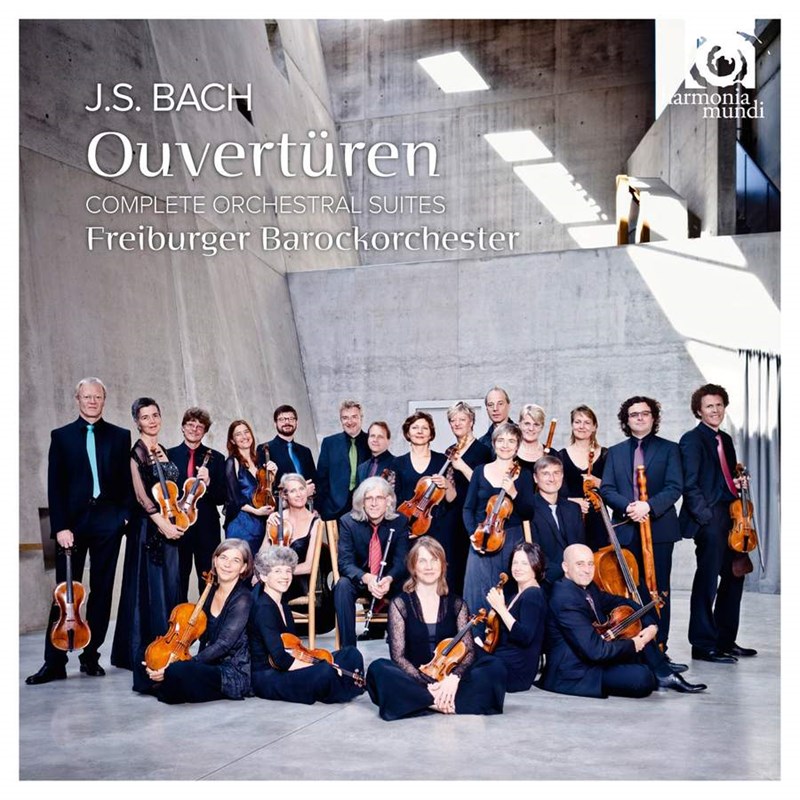
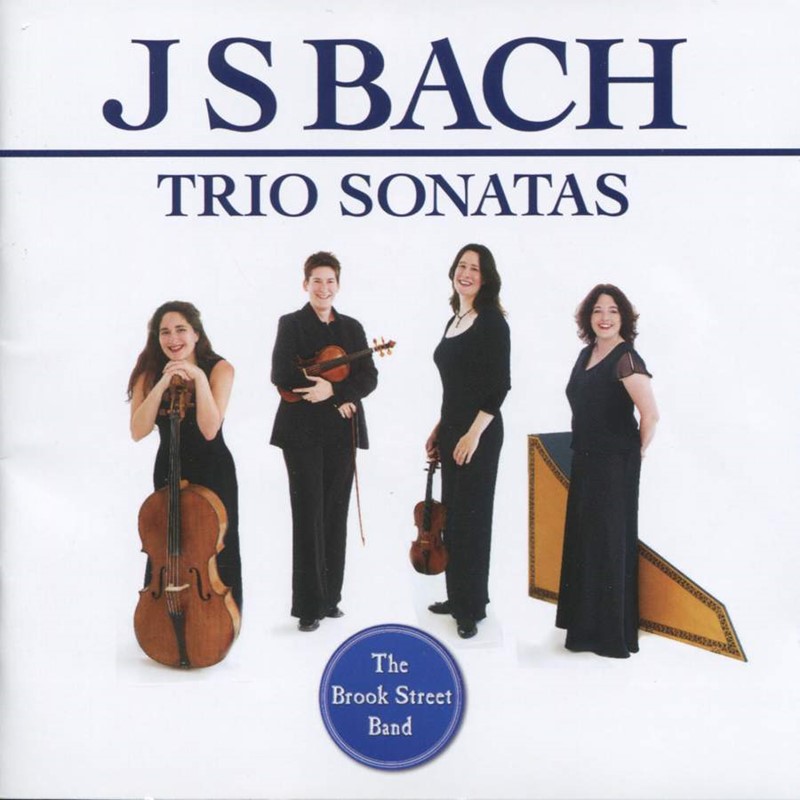
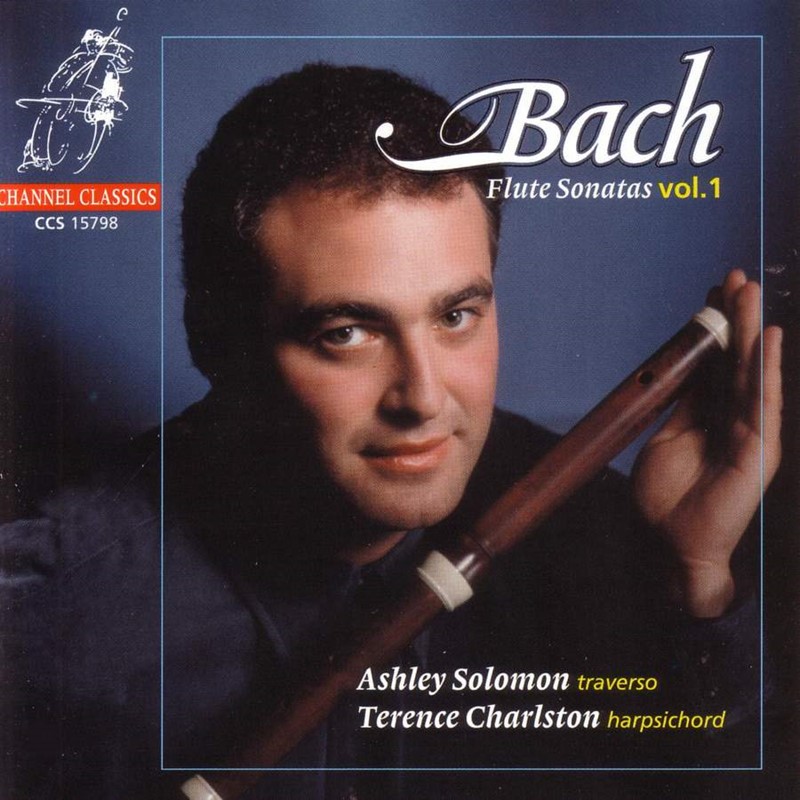
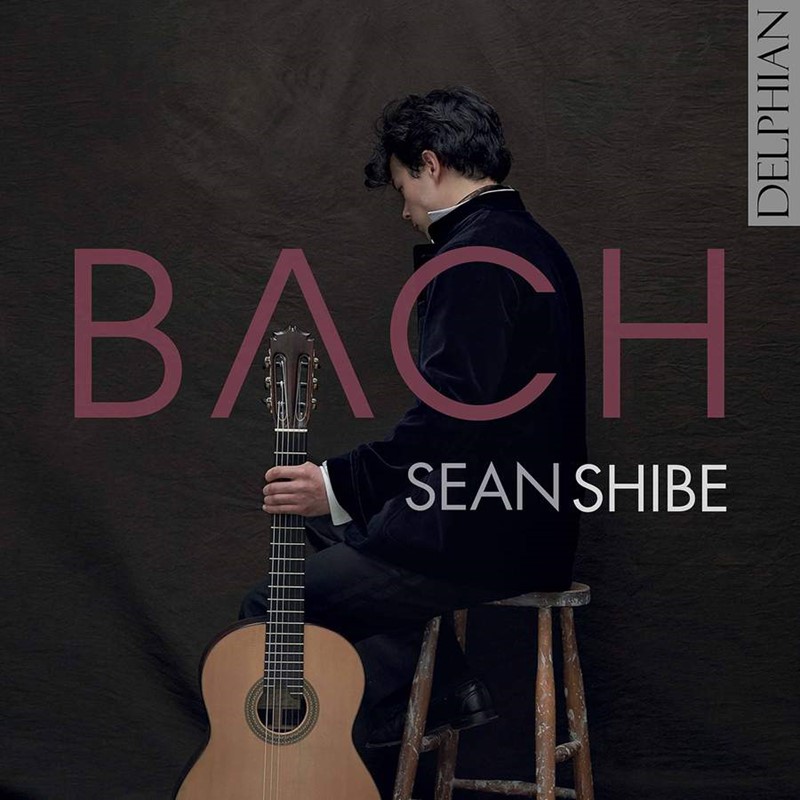
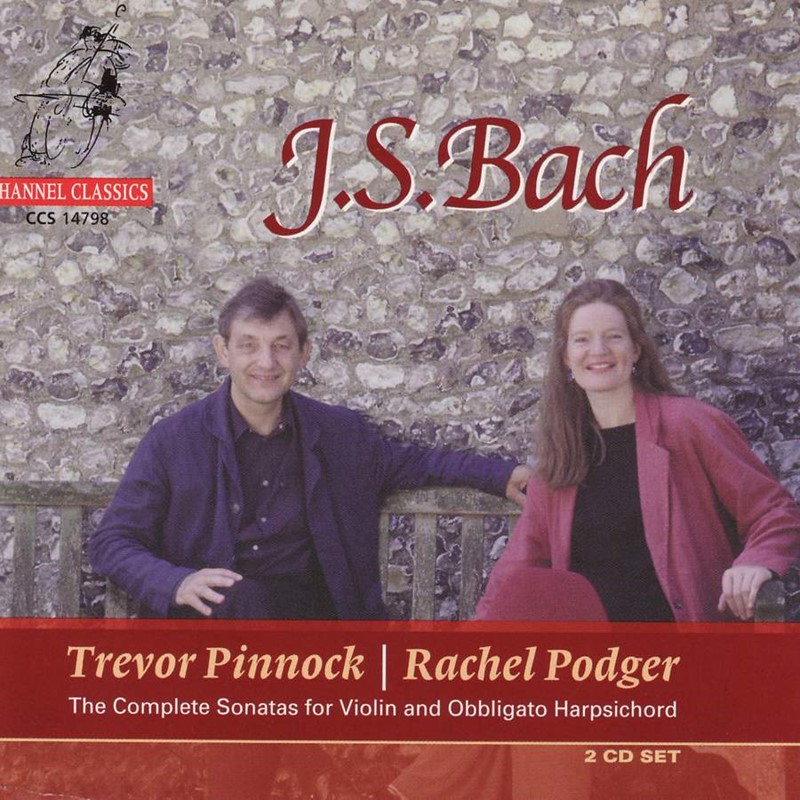
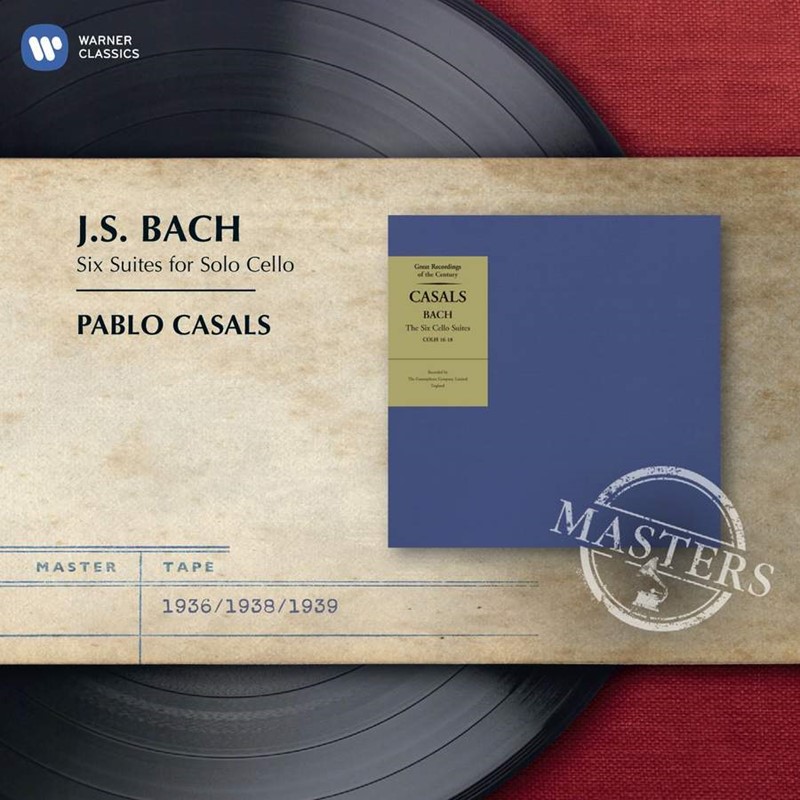
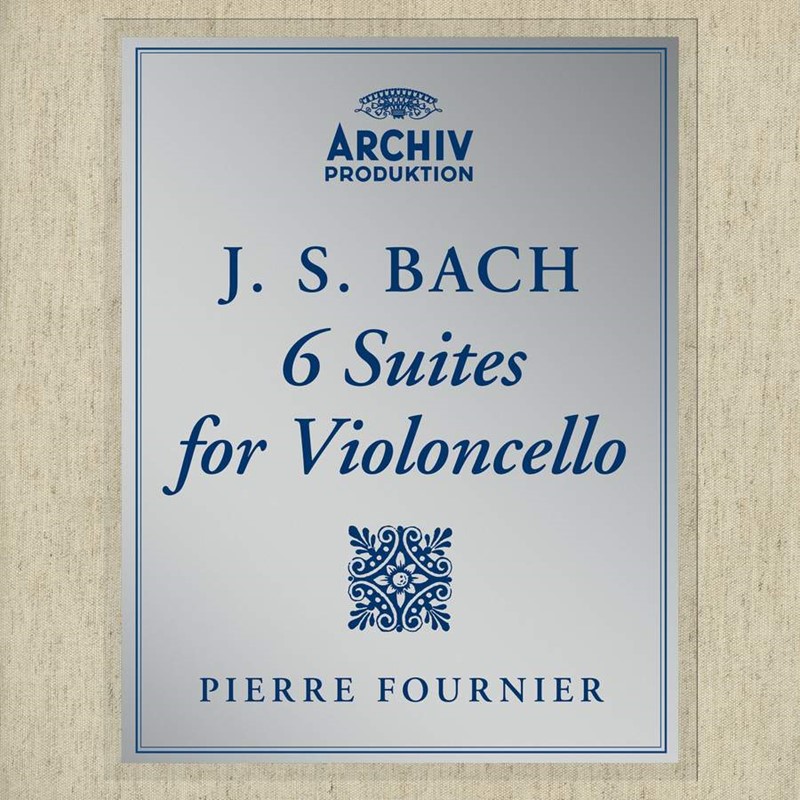













Pentru a putea adăuga comentarii trebuie să fii membru al altmarius !
Alătură-te reţelei altmarius